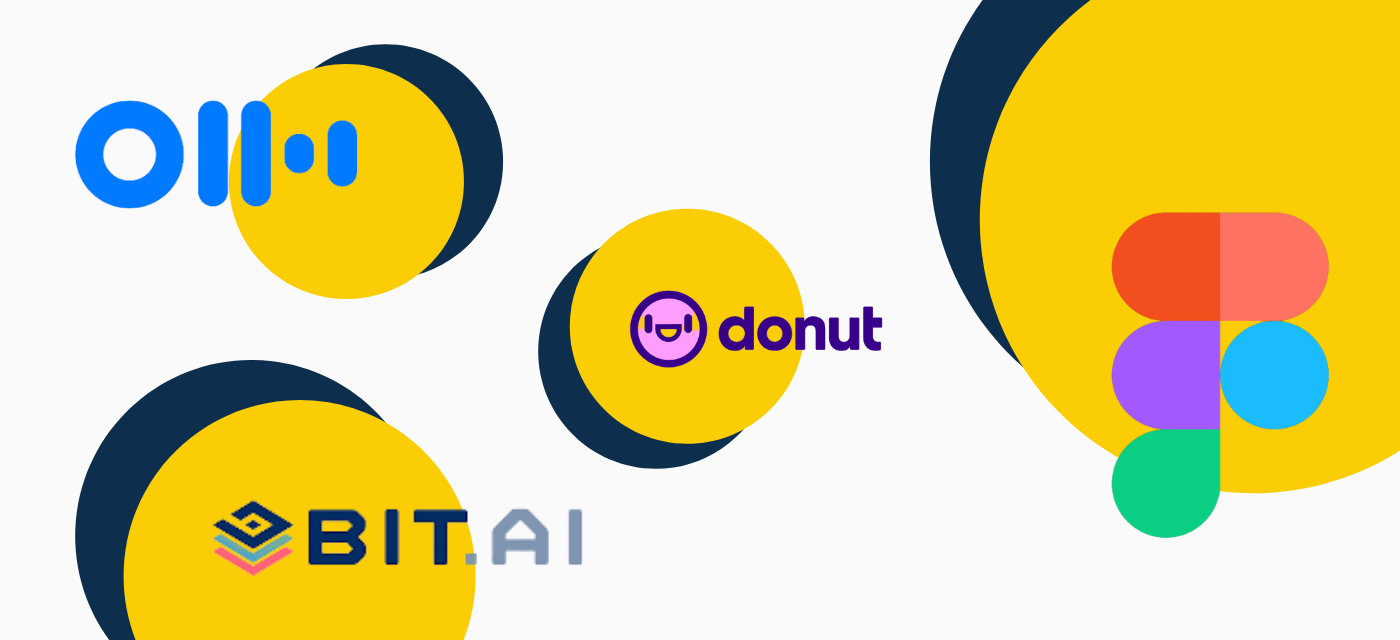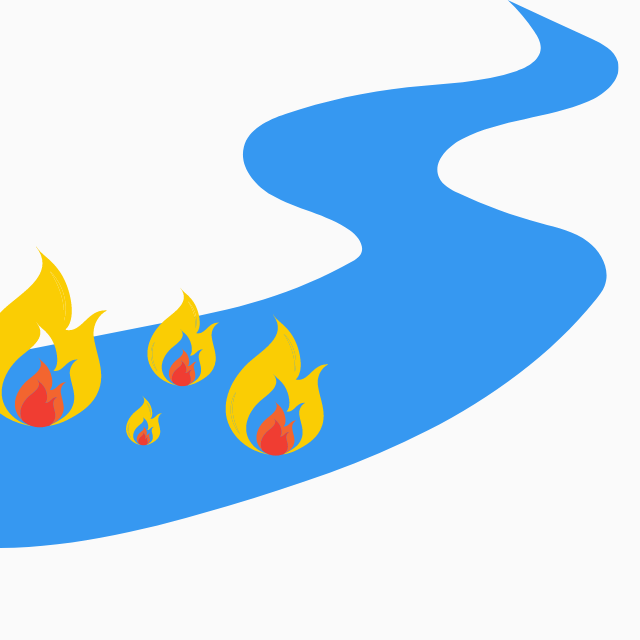What happens when a talent shortage meets a capital shortage? Much like the beginning of a bad joke, everyone freezes — literally.
With companies left, right and centre putting a freeze on new hires and even laying off staff, it seems that ‘winter’ is set to last a little while longer.
So what can companies do to dial up their productivity and keep people engaged when they can’t bring in additional resources? The answer lies in the art of ruthless prioritisation, which helps us do more good with less.
Getting the most out of what we have is not a ‘nice to have’ but an essential part of navigating the seemingly constant change of the current economy. And it involves ditching the fluff and ruthlessly prioritising high-value tasks that actually move the dial, without compromising fulfilment. Let’s break it down (minus the breakdown).
The icy reality of a hiring freeze
From Microsoft to Meta, many businesses are facing a situation right now — amidst interest rate rises, soaring cost of living, market uncertainty and volatility — where they are having to make the difficult decision to ‘slow the pace of growth’. And with a dire shortage of capital availability and unemployment at a 48-year low, we have ourselves a recipe for one helluva freeze.
While hiring freezes are often prompted by a desire to ‘keep’ the talent you do have, there’s little getting around the fact that they make everyone a little chilly.
Pumping the snowplough on growth can inadvertently communicate to existing employees to ‘watch your back,’ while simultaneously projecting to the outside world that ‘business isn’t going so well.’ While neither of these things might be true, a bit like buying presents for your in-laws — it’s the thought that counts — and perception can stop your business in its tracks.
Another bumpy reality of instituting a hiring freeze is that the amount of work hasn’t diminished, but your resources have, and it’s possible morale has too.
Operating lean looks set to be the reality for the foreseeable future. But with teams feeling increasingly fatigued and overstretched, simply ‘doing more with less’ is not the answer.
The art of ruthless prioritisation
None of us goes to work each day begging to be overwhelmed by work, buried by a never-ending inbox, and unable to focus on critical priorities. Instead, we want to have a set of clear priorities, ample resources, time and space to think innovatively and creatively, and the support and flexibility to do our best work.
Whether it’s using Beamible or another method, we need to pause, collect data, then strategise to to get the most for and from your people. Enter: ruthless prioritisation — the key to working faster, better, stronger, but definitely not harder.
Exactly as it sounds, ruthless prioritisation is about getting crystal clear about what activities you are doing on a day-to-day basis, and ranking or tagging them from high- to low-importance and from ‘energising’ to ‘de-energising’. You can even tag activities with labels like ‘deep thinking’ vs ‘administrative’ work, or ‘specialty’ vs ‘generalist work.
Organisational psychologists Amy Wrzesniewski and Jane Dutton call this “job crafting,” we call it ‘the magic of strategic work design.’ But regardless of what label you put on it, the key to doing more good with less is stopping regularly to ask questions that you might not like the answers to, recognising any patterns that are holding you and your team or organisation back and making changes accordingly.
Some questions to ask at an individual level:
- Is the work you’re doing important to the overall business goals, or was it a reactive task someone threw your way on a whim?
- Is the work you’re doing really something that has to be done now?
- Is the meeting you sit through every week something you could do fortnightly? Or even monthly? Or is it even providing you value at all?
- What are the tasks that give you energy and what drains your brain juice?
Some questions to ask at an executive or organisational level:
- If we need to freeze, how can we ensure the right skills are available in the right place at the right time?
- In the event we have to let some people go, how can we make evidence-based decisions about which employees are creating the most impact?
- How can we reduce costs elsewhere to salvage our headcount? Could we reassess office overheads and shift to a hybrid environment?
- Can automation solve for any of the challenges we’re facing?
Usually when we prioritise, we look at our ‘to-do’ list and see what we can shift around. However, when we ruthlessly prioritise, we’re doing that at the same time as also seeing what we can stop doing either temporarily or altogether. That’s right: ditch ‘em from the list and get really focused on impactful work!
In this way, ruthless prioritisation vs regular prioritising enables people to become active architects of their own work lives, and it allows us all not to just ‘do more with less’, but to do more of the good stuff that actually maximises the impact of the resources you have.
“Your life is not a grocery list…[or] a collection of random tasks. Not everything on your plate holds equal importance, and that means many seemingly ‘urgent’ items may need to fall by the wayside while you work on the small number of objectives that really matter.”
— Daniel DiPiazza, The Art of Ruthless Prioritization
Based on the art of ruthless prioritisation, we like to think of the cure to the workplace’s modern day ills as less vitamin and more productivity painkiller. It’s essential, and it helps keep us on mission.
Want to try out a ‘Win time back’ challenge with a group of leaders from your organisation?
Beamible offers 1 hour consultations to explore how you can win time back in your day.
Committing to an evolving definition of productivity
By current definition, productivity means ‘the ratio between the volume of outputs and the volume of inputs.’ Or in essence, it’s how we measure what we have to show for our investment in our people and their time.
But the way we see it, these times call for a more sophisticated redefinition of ‘productivity’ for the Hybrid Era. Productivity can no longer be just about output or tasks ticked off a ‘to-do’ list, sitting at a desk 9-5 five days a week. That’s not only outdated, but we know that greater flexibility opens the door for diversity and inclusion.
Instead managers and HR leaders must expand the way we think about productivity to include a focus on wellbeing, connection, energy, and collaboration. We need to optimise the conditions that spur a hyper-personalised definition of productivity that drives innovation and business success, without burning everybody out.
The problem is, we can’t do more with less without facing imminent burnout across our workforces. Burnout leads to achieving even less! So what do we do? The solution is to do more of the good, important and high value ‘stuff’.
The modern HR leader needs to be able to meet evolving business needs and respond effectively to disruption with minimal fuss. They need to be a jedi at wrangling resources to ensure you have the right skills available in the right place at the right time. And they need to be able to do all this while redesigning policies and processes to remove the ‘friction’ that slows down work and leaks energy and efficiency. This can be a tricky needle to thread. So, what are three things to keep in mind if you want to do more good with less?
Three tips to help you do more of the ‘right’ stuff
Step 1 — Lead from the front and actively role model
If the belief from the top is that everything needs to be done and nothing can wait, it’s extremely difficult for management to support employees in managing workload. If it isn’t clearly articulated from the top what can stop and what’s most important, we’re also leaving this critical decision on what to prioritise up to individuals and it’s easy to lose direction.
On the other hand, when leaders actively role model and give people the tools to gain greater clarity on what’s a priority, and are given licence to stop or reduce work that is not important, it can be incredibly empowering. It can also help to nurture a company culture characterised by trust, autonomy and accountability, which can result in higher revenue.
Step 2 — Identify what’s holding you back
For productivity initiatives to be useful, they need to be simple, measurable and actionable. They also need to help you identify clear opportunities for improvement and give you insights into what’s killing your business buzz.
Do you know what things put a handbrake on productivity in your workplace? Is it collaborative overload? Decision by committee? Too many meetings? Lack of clear role design and reporting lines?
When teams are tagging or identifying their activities, be sure to capture whether work bundles fall into the ‘productivity driver’ or ‘productivity diver’ bucket. By identifying, measuring and eliminating low-importance work and prioritising high-value work, we can increase productivity and energy levels at the same time.
Step 3 — Ditch the fluff but not the fulfilment
And according to Gartner, failure to reevaluate and realign with these fundamentals will exhaust already taxed employees, and make them less willing and able to stay engaged and productive. At a fundamental level, work that people find energising is a driver of productivity. In fact, there is a direct link between low morale and low productivity.
It’s no longer important that everyone works a traditional 38 hour+ week. It only matters that we allocate people to the highest value work, optimise our talent budgets and adapt to how our people need and want to work. And remember: well designed work is the ultimate perk.
Warm the chill
It’s time to be more intentional about your approach to productivity. If you are interested in learning more about how Beamible can make this ‘painkilling’ task easier to swallow, book a demo or drop us a line.





